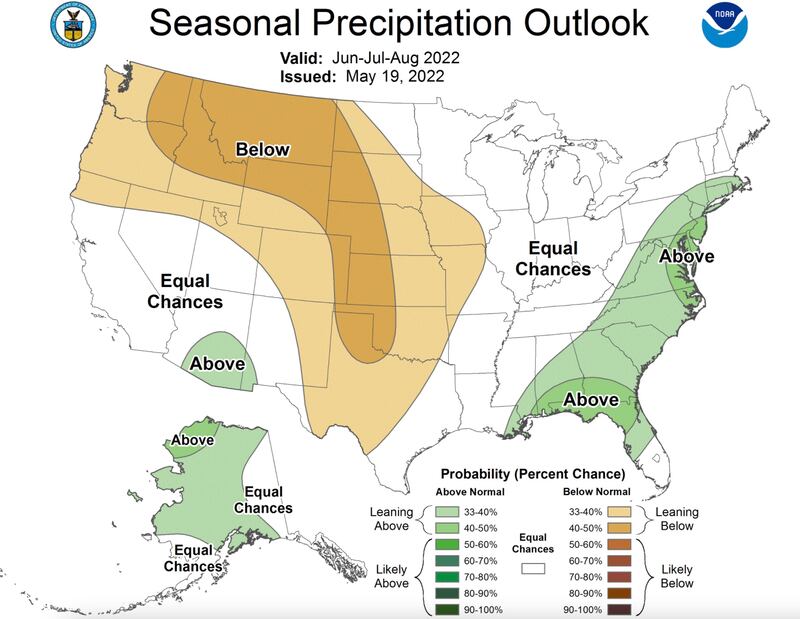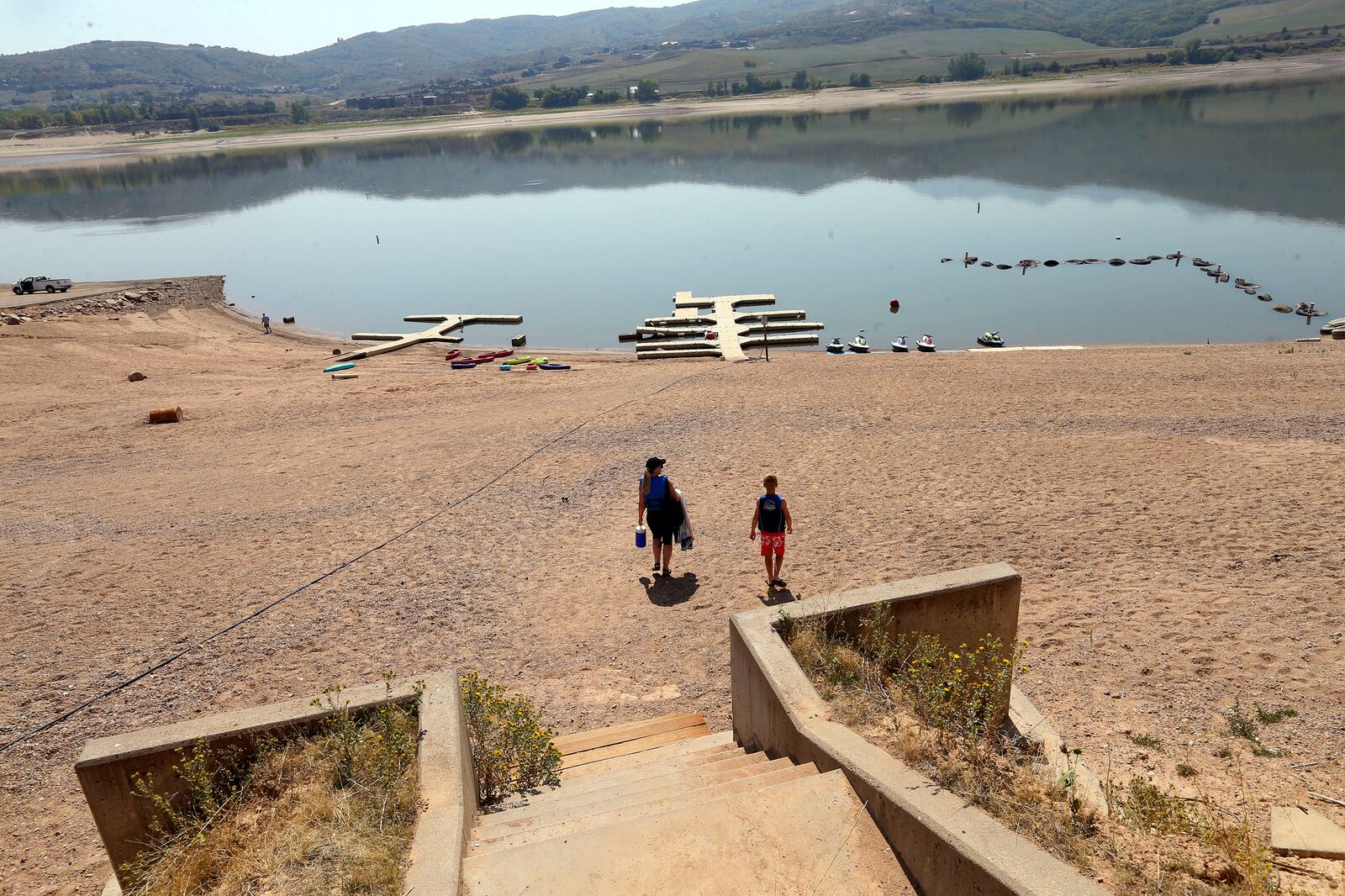Summer is just around the corner and it appears Utah is in for another hot and possibly dry one, but the door is still open for moisture to return in parts of the state.
The National Weather Service Climate Prediction Center published its three-month outlook for the meteorological summer months of June, July and August on Thursday, providing a general overview of what's to come.
The report lists Utah at the center of the highest probability for above-average temperatures in the nation, while the northern portion of the state is leaning toward a drier-than-average season. However, the good news is most of the state south of the Wasatch Front is listed in "equal chances," which means there are no trends indicating a wet or dry summer overall.
Feeling hot, hot, hot
Utah's average temperature in the summer is about 68.3 degrees overall, based on the 20th century average. Last year produced Utah's hottest summer on record with a 73.1-degree average, but that record could already be in jeopardy.
While almost all of the intercontinental U.S. is expected to have above-average temperatures, nearly all of Utah and Colorado are listed in a sphere where the probability of a hotter-than-average summer is 70% to 80%. Parts of Arizona, Idaho, Nebraska, New Mexico, Texas and Wyoming are also listed as having that likelihood.

Washington County is about the only portion in Utah not in for higher heat, but it has a 50% to 60% probability of above-average temperatures.
Monsoonal encore?
Summer, of course, means different things in different parts of the state. It normally produces 2.94 inches of rain statewide, though it's lower in places like Salt Lake City (2.02 inches). It's traditionally the driest season in the state.
Yet the past two summers have been completely different when it comes to moisture. Summer 2020 produced 1.49 inches of rain, ranking the 13th-driest summer on record; last summer, while the hottest on record, was the 18th wettest on record with 4.06 inches of precipitation.
Monsoons were the difference between the two summers.
Projections ahead of Thursday's three-month outlook provided some optimism that monsoons will return to Utah again this year. Basil Newmerzhycky, a lead meteorologist for Great Basin Predictive Services, said earlier this month that all conditions are in place for a "fairly robust monsoon" to return in July.

That appears to still be the case as the summer draws closer. Southern parts of Arizona and New Mexico are listed as having a 33% to 40% probability of above-average precipitation. Because areas north are listed in equal chances, it's unclear but very possible that those storms will carry north into Utah, as they typically do. Newmerzhycky said he believes that will be the case.
Northern Utah may not be as lucky. The northern and northeastern parts of the state are listed as having a 33% to 40% likelihood of below-average precipitation.
Why the outlook matters
The weather outlook helps in figuring out what to plan for this summer. Outlooks like this help pinpoint what's needed in terms of local, state and federal water conversation and wildfire fighting — issues that Utah Gov. Spencer Cox addressed during his monthly press briefing with members of the media Thursday.
The governor again called on Utahns to conserve water, especially as the entire state reservoir system remains at about 61% of capacity and there's very little remaining in the statewide snowpack. Many of the state's smaller reservoirs — those used primarily for agricultural irrigation — are the most likely to run dry.
According to a Thursday update from the U.S. Drought, nearly 56% of the state is currently listed in extreme drought status. That's up 8.42 percentage points from last week's report. Almost all of the remaining parts of the state are listed in severe drought.
"As we move into the watering season, people are already cutting back on their lawns, farmers are cutting back significantly on irrigation when it comes to their crops," Cox said. "That's going to help us get through what could potentially be a very dry summer."
In relation to fire risks, which are expected to grow over the summer, he also said the state could look into a firework ban ahead of the periods they are legal in July but that remains to be seen. Salt Lake City officials previously announced they wouldn't hold public displays this year because of what was looming in the long-range forecast.
